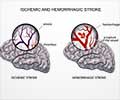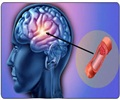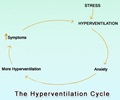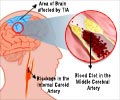Your eyes could hold the key to preventing strokes! Discover how retinal vascular fingerprints are unlocking non-invasive health diagnostics.
- Retinal vascular "fingerprints" can predict stroke risk with accuracy comparable to traditional invasive methods
- Changes in retinal blood vessel density, caliber, and twistedness are strong indicators of stroke risk
- This innovative approach could make stroke risk screening more accessible, especially in underserved communities
He is the principal author of a new study published in the journal Heart, which discovered that a vascular "fingerprint" on the retina may be able to predict a person's stroke risk in a less intrusive manner than standard examinations (1✔ ✔Trusted Source
Retinal vascular fingerprints predict incident stroke: findings from the UK Biobank cohort study
Go to source).
TOP INSIGHT
Did you know?
Your eyes can reveal more than you think! Retinal vascular "fingerprints" may predict stroke risk- offering a non-invasive, accessible path to prevention. #retina #strokerisk #medindia
Identifying a Vascular 'Fingerprint' in the Eyes
For this study, researchers examined fundus images of the retinas of over 45,000 Biobank members in the United Kingdom to find detectable biomarker markers in the retina's blood vessels. Following research, scientists discovered 118 quantifiable retinal vascular markers, 29 of which were substantially related to a participant's first-time stroke risk, resulting in a vascular "fingerprint.""Vascular 'fingerprint' on the retina refers to unique retinal parameters or patterns in an individual's retina," he wrote. "Analyzing vascular fingerprints on the retina across populations can help identify trends and risk factors associated with stroke."
Seventeen of the 29 indicators measure density. Researchers discovered that every change in these variables increased the risk of stroke by 10-19%. Changes to the three caliber markers in the "fingerprint" were associated with a 10-14% increase in stroke risk. Changes in the complexity and twistedness markers were associated with a 10.5-19.5% increased risk of stroke.
Potential for Less-Invasive Stroke Risk Testing
Researchers found that the retina vascular "fingerprint" was as effective as standard risk factors for predicting future stroke risk, even when combined with only age and gender stroke risk factors."Traditional ways (blood tests) to predict stroke risk are limited by relatively low accuracy, invasiveness, and high cost," the doctor stated. "We are planning to use the same method to conduct risk prediction for other diseases such as heart disease and dementia," said the researcher.
Retina is an Extension of the Brain
Alexander Solomon, M.D., a surgical neuro-ophthalmologist and strabismus surgeon at Pacific Neuroscience Institute at Providence Saint John's Health Center in Santa Monica, CA, said, "While overall, the findings of this study will be of little surprise to most ophthalmologists, it's nice to see a study that formalizes this relationship and starts to really break down some of the metrics of retinal vasculature that reflect higher risk changes associated with increased risk of stroke.""The link between retinal vascular alterations and stroke is unsurprising given that the retina is essentially an extension of the brain. As a result, it is made up of a sequence of neurons (brain cells) that are sensitive to and process light, so a retinal exam may always be evaluating a section of your brain," said Alexander Solomon, M.D.
"We also know that these arteries change in response to a number of systemic vasculopathy diseases, such as hyperlipidemia, hypertension, diabetes, and inflammatory disorders, all of which can raise the risk of stroke. Again, knowing which qualities are more hazardous is both important and exciting," Solomon stated.
"Many of the components of this 'fingerprinting' can be qualitatively appreciated but not numerically evaluated during a standard eye exam. It would be both useful and intriguing to make the study more widely available so that eye doctors may better counsel their patients, as well as to increase the generalizability described above," he said.
Need for Non-Invasive Diagnostics to Estimate Stroke Risk
Christopher Yi, M.D., a board-certified vascular surgeon at Memorial Orange Coast Medical Center in Fountain Valley, California, said, "As a physician working with patients who suffer from strokes, this is definitely an exciting and innovative discovery.""The discovery of a non-invasive approach for predicting stroke risk using retinal vascular 'fingerprints' is remarkable. It not only provides a realistic approach to early detection, but it has the potential to make stroke risk screening more accessible and resource-efficient, particularly in underprivileged populations," said Chris Yi, M.D.
"Stroke is a leading cause of disability and death worldwide, with many cases attributed to modifiable risk factors. Current risk prediction algorithms rely mainly on invasive tests such as blood draws, ultrasounds, CT scans, and MRIs, which can be expensive and impractical for large-scale screening," Yi explained.
"A retinal-based approach uses a noninvasive, basic diagnostic tool that may be readily integrated into routine eye exams, especially in primary care settings. "By improving early detection, healthcare providers can intervene earlier to manage risk factors and potentially prevent strokes," he explained.
"This study is a huge step forward in preventative medicine, offering promise for lowering the global burden of stroke. It demonstrates the possibility of interdisciplinary techniques that combine ophthalmology, cardiology, and technology to solve complicated health issues," he said.
Reference:
- Retinal vascular fingerprints predict incident stroke: findings from the UK Biobank cohort study - (https://heart.bmj.com/content/early/2025/01/03/heartjnl-2024-324705)
Source-Medindia
 MEDINDIA
MEDINDIA





 Email
Email










